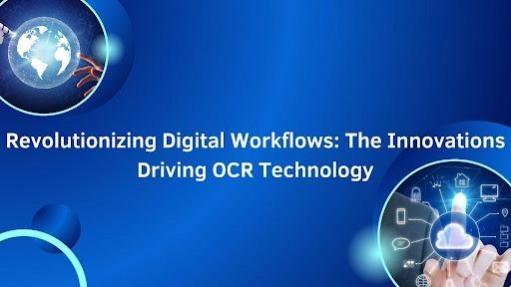
In the digital age, the demand for seamless automation is transforming industries, and Optical Character Recognition (OCR) technology is at the forefront of this shift. Researcher Mohit Sachdeva explores how OCR innovations are enhancing document processing, paving the way for intelligent automation. His work sheds light on cutting-edge techniques that enable faster, more accurate, and more efficient data extraction, benefiting sectors like healthcare, finance, legal services, and education.
The Power of Image Preprocessing
OCR accuracy starts with image preprocessing, using techniques like binarization, noise reduction, and deskewing to enhance scanned documents. These refinements create cleaner inputs, minimizing errors and improving text recognition. Deep learning integration further optimizes preprocessing, enabling OCR systems to adapt to various document qualities and formats for better accuracy.
Feature Extraction: The Key to Accurate Recognition
Modern OCR systems rely on sophisticated feature extraction methods to distinguish characters. Geometric, statistical, and topological analysis of text structures enhances recognition capabilities. By leveraging artificial intelligence (AI), OCR can now process multi-script text, handwritten documents, and even complex layouts, expanding its applications across industries.
Advancements in Character Segmentation
Enhanced character segmentation is a key OCR advancement. Techniques like Connected Component Analysis and machine learning-based contextual analysis improve character differentiation, even in low-quality or distorted images. These innovations boost text recognition accuracy, making OCR more reliable for diverse real-world applications, from document processing to automated data extraction.
The Role of AI in Pattern Recognition
AI-driven pattern recognition has transformed OCR, enhancing accuracy with machine learning models like CNNs, SVMs, and adaptive templates. These systems now recognize diverse fonts, handwriting, and degraded texts with remarkable precision.
Intelligent Post-Processing for Enhanced Accuracy
Intelligent post-processing enhances OCR accuracy using advanced language models, dictionary validation, and structured format checks, ensuring precise data extraction—critical for finance and legal sectors where accuracy is essential.
Transforming Healthcare with OCR
OCR is making significant strides in the healthcare industry by streamlining medical record management. Automated data extraction from prescriptions, patient history, and insurance documents reduces human error and enhances workflow efficiency. Integration with clinical decision support systems has further improved diagnosis accuracy and patient care.
Accelerating Financial Services Automation
In financial services, OCR simplifies processes like customer onboarding, compliance verification, and risk assessment. Automated data extraction from financial statements, invoices, and regulatory documents accelerates workflows while ensuring accuracy. AI-enhanced OCR also strengthens fraud detection mechanisms by validating document authenticity in real-time.
Enhancing Legal Document Management
Legal professionals benefit from OCR technology through rapid digitization of contracts, court filings, and case documents. Automated search and retrieval functions enable quicker legal research, improving productivity. Furthermore, OCR ensures compliance by accurately analyzing regulatory texts and maintaining organized digital archives.
Driving Innovation in Education
OCR-powered solutions transform education by enabling text-to-speech, digitizing materials, and automating grading. Converting handwritten assignments into searchable formats enhances accessibility, fostering inclusive learning for visually impaired students.
The Future of OCR: AI, Edge Computing, and Multilingual Recognition
AI-driven OCR is evolving with deep learning, real-time processing, and multilingual recognition. Transformer models and federated learning enhance adaptability, while edge computing enables fast, accurate text recognition on mobile and IoT devices, reducing dependence on cloud connectivity.
Overcoming Integration Challenges
While OCR continues to evolve, challenges such as data privacy, template management, and security concerns remain. Organizations must implement robust preprocessing frameworks, adaptive learning models, and encryption protocols to safeguard sensitive information while optimizing OCR performance.
In conclusion, as OCR technology continues to advance, its role in intelligent automation is becoming increasingly indispensable. By leveraging AI-driven innovations, industries can achieve greater efficiency, accuracy, and scalability in document processing. Research by Mohit Sachdeva underscores the transformative potential of OCR, paving the way for a future where intelligent automation redefines digital workflows.

















